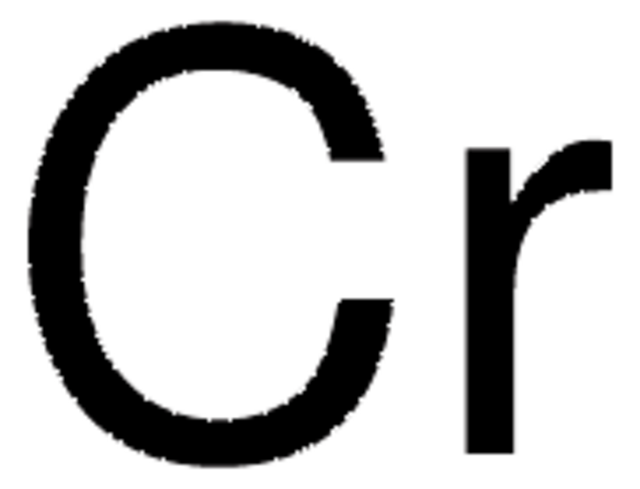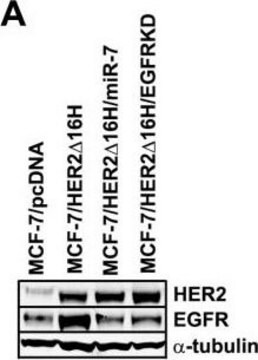推薦產品
生物源
mouse
品質等級
共軛
unconjugated
抗體表格
purified antibody
抗體產品種類
primary antibodies
無性繁殖
9-4-3, monoclonal
分子量
calculated mol wt 60.06 kDa
物種活性
virus
包裝
antibody small pack of 100 μL
技術
immunocytochemistry: suitable
western blot: suitable
同型
IgG1
UniProt登錄號
運輸包裝
dry ice
儲存溫度
2-8°C
目標翻譯後修改
unmodified
基因資訊
human ... NEWENTRY(2828653)
一般說明
Fusion glycoprotein F0 (UniProt: P06828) is encoded by the F gene (Gene ID: 2828653) by the Human parainfluenza 3 virus (HPIV-3). HPIVs are antigenically divided into types 1-4 and type 1 and 3 are reported to cause most lower respiratory infections. HPIVs are enveloped and of medium size (150 to 250 nm), and their RNA genome is in the negative sense. HPIV3 displays three conformational states: pre-fusion native state, pre-hairpin intermediate state, and post-fusion hairpin state. During viral and plasma cell membrane fusion, the heptad repeat (HR) regions assume a trimer-of-hairpins structure, positioning the fusion peptide near the C-terminal region of the ectodomain. The formation of this structure drives apposition and subsequent fusion of viral and plasma cell membranes. This fusion is reported to be pH independent and occurs directly at the outer cell membrane. Fusion glycoprotein F0 is a single-pass type I membrane glycoprotein that is synthesized with a signal peptide (aa 1-18), which is subsequently cleaved off to generate the mature form. This inactive precursor F0 is glycosylated and proteolytically cleaved into F1 (aa 110-539) and F2 (19-109) to be functionally active. The cleavage is mediated by cellular proteases during the transport and maturation of the polypeptide. (Ref.: Hendrickson, KJ. (2003). Clin. Microbiol. Rev. 16(2); 242-264).
特異性
Clone 9-4-3 is mouse monoclonal antibody that detects Fusion glycoprotein of Parainfluenza 3 virus.
免疫原
Fusion (F) glycoprotein of human parainfluenza type 3 virus.
應用
Quality Control Testing
Evaluated by Immunocytochemistry in LLC-ML2 cells infected with HPIV-3.
Immunocytochemistry Analysis: A 1:250 dilution of this antibody detected Fusion Glycoprotein of HPIV 3 in LLC-ML2 cells infected with HPIV-3.
Tested Applications
Western Blotting Analysis: A representative lot detected Fusion Glycoprotein of HPIV-3 in Western Blotting applications (Xie, W., et. al. (2015). PLoS One. 10(8):e0136474).
Note: Actual optimal working dilutions must be determined by end user as specimens, and experimental conditions may vary with the end user
Evaluated by Immunocytochemistry in LLC-ML2 cells infected with HPIV-3.
Immunocytochemistry Analysis: A 1:250 dilution of this antibody detected Fusion Glycoprotein of HPIV 3 in LLC-ML2 cells infected with HPIV-3.
Tested Applications
Western Blotting Analysis: A representative lot detected Fusion Glycoprotein of HPIV-3 in Western Blotting applications (Xie, W., et. al. (2015). PLoS One. 10(8):e0136474).
Note: Actual optimal working dilutions must be determined by end user as specimens, and experimental conditions may vary with the end user
Anti-Fusion Glycoprotein of HPIV 3, clone 9-4-3, Cat. No. MAB10207-I, is a mouse monoclonal antibody that detects human parainfluenza type 3 virus and is tested for use in Immunocytochemistry and Western Blotting.
外觀
Purified mouse monoclonal antibody IgG1 in buffer containing 0.1 M Tris-Glycine (pH 7.4), 150 mM NaCl with 0.05% sodium azide.
儲存和穩定性
Stable for 1 year at +2°C to +8°C from date of receipt.
其他說明
Concentration: Please refer to the Certificate of Analysis for the lot-specific concentration.
免責聲明
Unless otherwise stated in our catalog or other company documentation accompanying the product(s), our products are intended for research use only and are not to be used for any other purpose, which includes but is not limited to, unauthorized commercial uses, in vitro diagnostic uses, ex vivo or in vivo therapeutic uses or any type of consumption or application to humans or animals.
未找到適合的產品?
試用我們的產品選擇工具.
儲存類別代碼
12 - Non Combustible Liquids
水污染物質分類(WGK)
WGK 1
閃點(°F)
Not applicable
閃點(°C)
Not applicable
分析證明 (COA)
輸入產品批次/批號來搜索 分析證明 (COA)。在產品’s標籤上找到批次和批號,寫有 ‘Lot’或‘Batch’.。
我們的科學家團隊在所有研究領域都有豐富的經驗,包括生命科學、材料科學、化學合成、色譜、分析等.
聯絡技術服務





